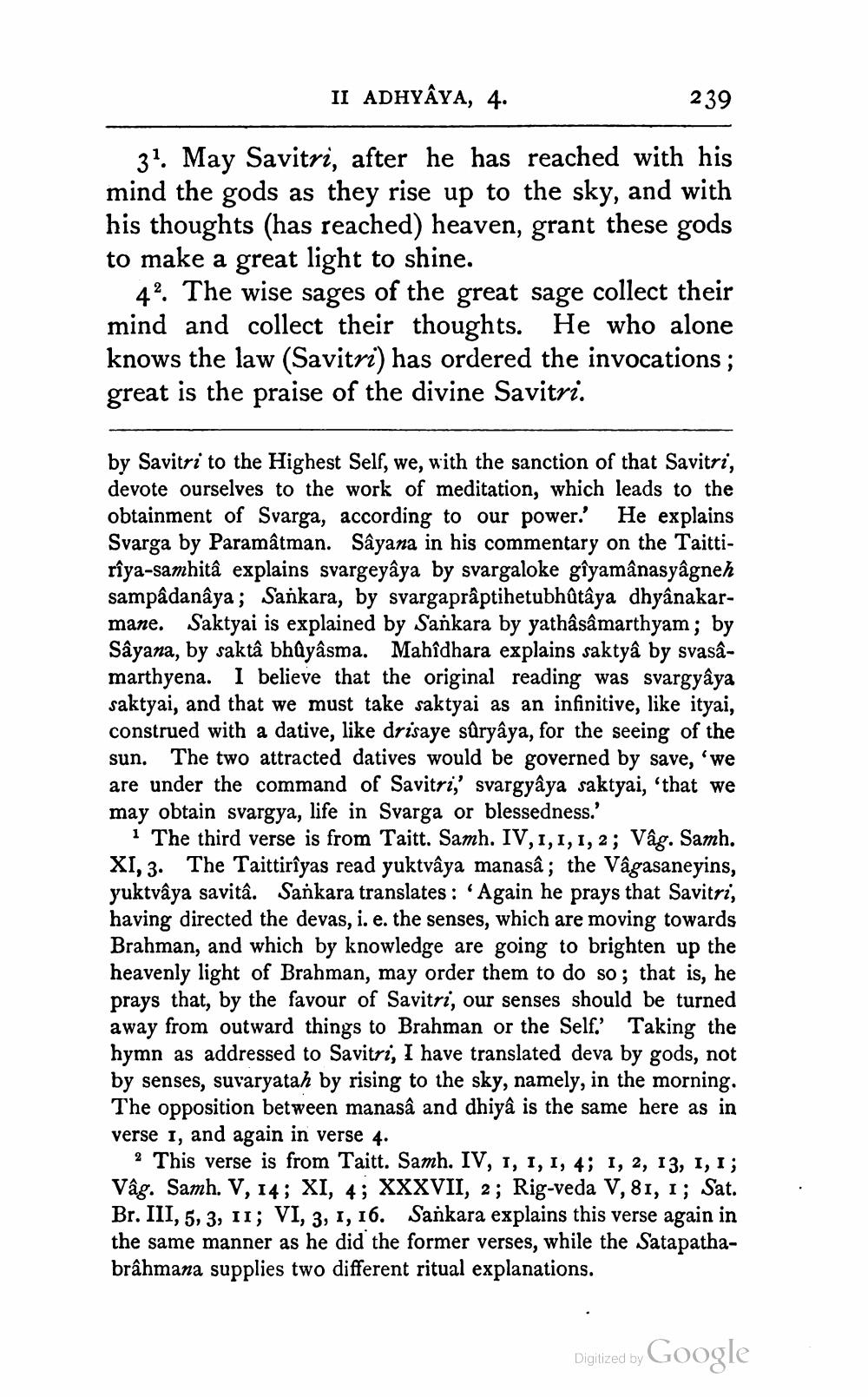________________
II ADHYAYA, 4.
239
31 May Savitri, after he has reached with his mind the gods as they rise up to the sky, and with his thoughts (has reached) heaven, grant these gods to make a great light to shine.
42. The wise sages of the great sage collect their mind and collect their thoughts. He who alone knows the law (Savitri) has ordered the invocations; great is the praise of the divine Savitri.
by Savitri to the Highest Self, we, with the sanction of that Savitri, devote ourselves to the work of meditation, which leads to the obtainment of Svarga, according to our power. He explains Svarga by Paramâtman. Sâyana in his commentary on the Taittirîya-samhitâ explains svargeyâya by svargaloke gîyamânasyâgneh sampâdanâya; Sankara, by svargaprâptihetubhûtâya dhyânakarmane. Saktyai is explained by Sankara by yathâsâmarthyam; by Sâyana, by sakta bhūyâsma. Mahîdhara explains saktyâ by svasamarthyena. I believe that the original reading was svargyâya saktyai, and that we must take saktyai as an infinitive, like ityai, construed with a dative, like drisaye sûryâya, for the seeing of the sun. The two attracted datives would be governed by save, 'we are under the command of Savitri,' svargyâya saktyai, 'that we may obtain svargya, life in Svarga or blessedness.'
The third verse is from Taitt. Samh. IV,1,1,1,2; Vâg. Samh. XI, 3. The Taittirîyas read yuktvậya manasâ; the Vâgasaneyins, yuktvậya savitâ. Sankara translates: 'Again he prays that Savitri, having directed the devas, i. e. the senses, which are moving towards Brahman, and which by knowledge are going to brighten up the heavenly light of Brahman, may order them to do so; that is, he prays that, by the favour of Savitri, our senses should be turned away from outward things to Brahman or the Self.' Taking the hymn as addressed to Savitri, I have translated deva by gods, not by senses, suvaryatah by rising to the sky, namely, in the morning. The opposition between manasâ and dhiyâ is the same here as in verse 1, and again in verse 4.
2 This verse is from Taitt. Samh. IV, 1, 1, 1, 4; 1, 2, 13, 1, 1; Vâg. Samh. V, 14; XI, 4; XXXVII, 2; Rig-veda V, 81, 1; Sat. Br. III, 5, 3, 11; VI, 3, 1, 16. Sankara explains this verse again in the same manner as he did the former verses, while the Satapathabrâhmana supplies two different ritual explanations.
Digitized by Google




